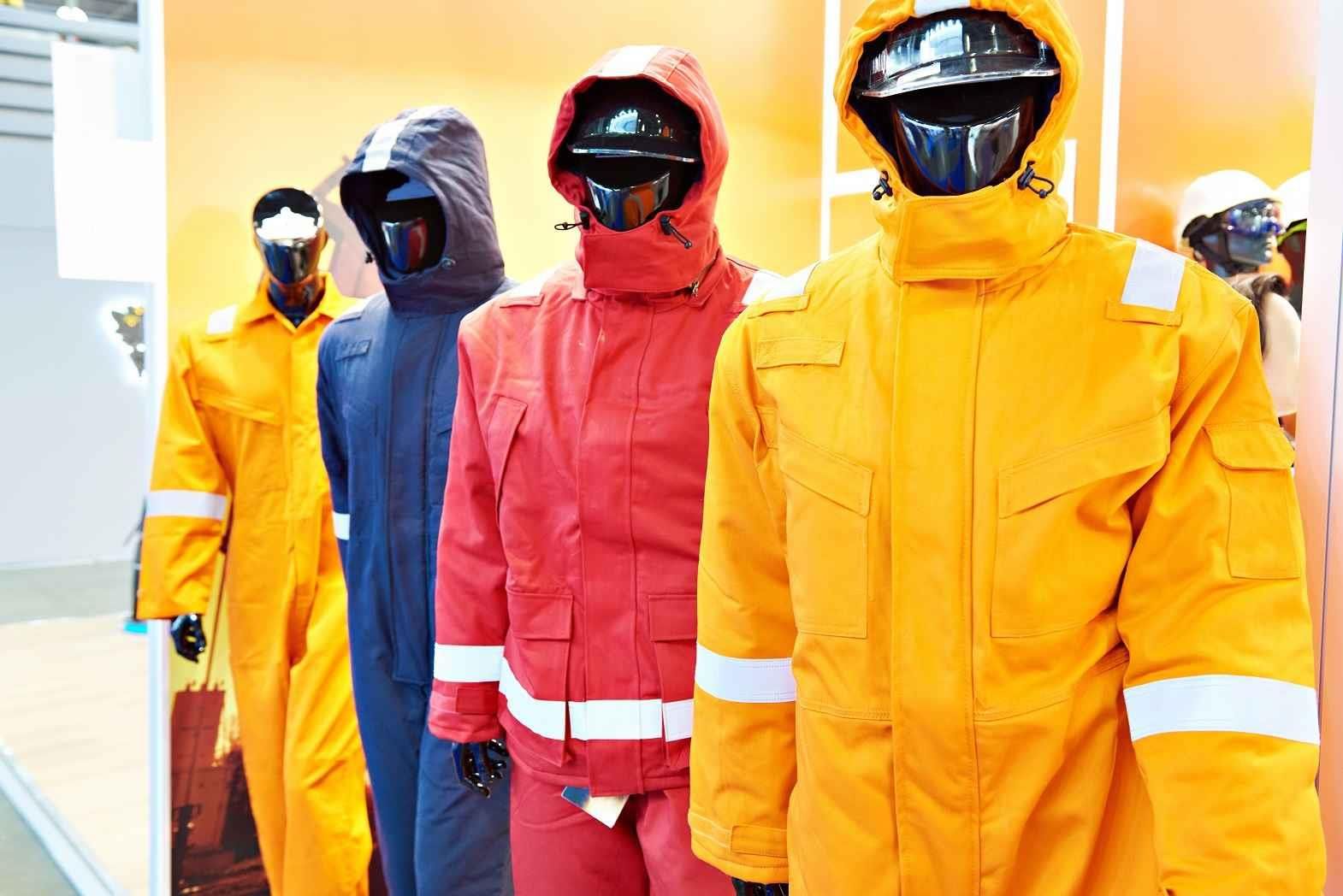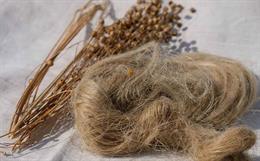The technical textiles are those textiles that primarily focus on technical performance and functionality as their end usage. These products cater to a wide array of sectors such as construction, agriculture, aerospace, automotive, healthcare, protective gear, and home care among others. They exhibit enhanced performance over the traditional textiles, and are manufactured using fibres such as Nomex, Kevlar, Spandex, Twaron etc. To be used in varied industries and applications, these fibres possess enhanced functional properties like higher tenacity, superior insulation, improved thermal resistance, and so on. In a fast-developing nation like India, technical textile products are in great demand and gaining traction which, in the process, is helping Indian technical textile sector to grow rapidly.
Market Overview
Valued at $260 billion, the global technical textiles market is expected to reach $325 billion by 2025-26, growing at a CAGR of 7.7 per cent1. This growth will be primarily driven by increasing global demand for technical textiles across industries and expanding base of new applicative products being developed at a rapid rate. Among regions, Asia-Pacific is projected to grow at a CAGR of 6 per cent to reach $102.6 billion by 20272. This regional growth is attributed to sectors such as healthcare, automotive, construction and industrial development apart from enhanced government focus and increasing application cognizance towards technical textiles in the region. And within Asia, Indian technical textiles market is poised for a remarkable growth trajectory, with expectation to reach a staggering $40-50 billion3 within the next five years.
Indian technical textiles market is the fifth largest in the world4 and stood at ~$22 billion in 2021-22, with production and imports amounting to $19.49 billion and $2.46 billion, respectively. In recent years, the market has grown in the range of 8-10 per cent per annum – a growth rate which the government is now endeavouring to accelerate to the level of 15-20 per cent over the next five years. However, the global penetration or usage level of technical textiles across different sectors is still comparatively much stronger than in India. During 2022, the penetration level of technical textiles in India varied from 5-10 per cent compared to 30-70 per cent globally.
Trade Scenario
Overall, India stands as the net exporter in trade of technical textile products going by the trade performance in 2022 when India’s exports of technical textile products rose 28.4 per cent to $2.85 billion over $2.21 billion in FY21. The import, with relatively lesser value of $2.46 billion, also followed the upward trend, growing 44 per cent over import of $1.7 billion in 2020-21. The growth trend in exports continued in 2023 as well, with an y-o-y (for April-November period) rise of 3.1 per cent. Except few, all constituting segments of technical textile products delivered a positive growth (Table 1).

In order to provide additional thrust to exports of technical textile products, the Ministry of Textiles (MoT) has mandated MATEXIL (Manmade and Technical Textiles Export Promotion Council) to promote technical textiles exports, in addition to already existing manmade fibre textiles exports. In the last 70 years, MATEXIL has worked tremendously to take the sector from being a small fledgling to become an exporter to more than 150 countries. This qualifies MATEXIL as an able and competent body to help the sector double its textiles production output to $250 billion and achieve exports value of $100 billion by 2030. MATEXIL, earlier known as SRTEPC (The Synthetic and Rayon Textiles Export Promotion Council), now has a new name and logo replacing the old one.
Speciality & High-Performance Fibres
Due to their physical properties of chemical resistance, tensile strength, limiting oxygen index and operating temperature, the speciality and high-performance fibres and composites are integral to technical textile products. Additionally, they offer more design alternatives for various items hence can be applied in a wide range of industries, including computer and communication applications, biotechnology, and ground and space transportation (Table 2).

Few of the major specialty and high-performance fibres include aramid fibre, gel-spun polyethylene fibres, carbon fibre, metallic fibres, glass fibre, ceramic fibres, melamine fibre, polyimide fibre, polybenzimidazole fibre, basalt fibre, boron fibre, optical fibre, high-density polyethylene (HDPE), fluoropolymer, chemically and thermally resistant fibres, among others.
Sensing their large-scale application needs, India has undertaken various R&D initiatives to develop such strategic and high-performance products. Under National Technical Textiles Mission (NTTM) initiative, around 24 projects have been undertaken by various premier research bodies and institutes for the development of specialty fibres: one each for meta aramid and para aramid fibre/fabric, nylon 66, and high tenacity/ super high tenacity polypropylene; two each for glass fibre and application, speciality/functional fibre, and ceramic fibre and applications; four each for carbon fibre/fabrics and applications and ultra-high molecular weight polyethylene (UHMWPE); and, seven for ultrafine nano fibre and nonwoven webs.

Shift From Natural to Manmade Fibre (MMF) Fabrics
Today, 70 per cent of global trade is happening in MMF fabrics with large part of mill fibre consumption shifting towards it. The rising demand for technical and medical textiles globally has only accelerated this shift. Although India traditionally focuses on cotton textiles, it also stands as the second largest producer of MMF that produces over 1,441 million kg of MMF and 3,000 million kg of MM filaments. The MMF value chain is vertically integrated with upstream and downstream linkages from raw materials to finished goods. For the sector to thrive, the Indian government has put crucial measures in place including the National Technical Textiles Mission (NTTM), the Production Linked Incentive (PLI) Scheme for manmade textiles, and the Remission of Duties and Taxes on Exported Products (RoDTEP) Scheme. At the same time, there are various issues that plague the MMF value chain, such as the limited supply of viscose fibre which is integral to India’s MMF sector.
National Technical Textiles Mission
In 2020, the Cabinet Committee on Economic Affairs (CCEA) established the National Technical Textiles Mission (NTTM) to promote the inclusive growth and market development in the sector. NTTM – a MoT flagship initiative, was launched with a budget of ₹14.80 billion (~$180.42 million) for a timeline of 2020-21 to 2023-24. The scheme’s objectives are to increase the penetration of technical textiles and upgrade workforce skillsets, promote the usage of technical textiles in various flagship schemes and missions, and develop products, indigenous machinery and equipment for technical textiles in order to boost ‘Make in India’, as well as enable the industry competitiveness and position India as a global leader. The initiative consists of four components:
-
Research, Development & Innovation with budget outlay of ₹10 billion (~$121.90 million)
-
Promotion & Market Development, assigned a budget of ₹500 million (~$6.09 million)
-
Export Promotion budgeted at ₹100 million (~$1.21 million)
-
Education, Training and Skill Development with allocated budget of ₹4 billion (~$48.76 million)

NTTM is expected to accelerate the usual business pace across constituting segments of technical textiles (Table 3). As of January 2023, 89 research projects totalling ₹2.65 billion (~$32.30 million) had been approved in various application areas of technical textiles such as Geotech, Agrotech, Specialty fibres, Protech, Sportech, Sustainable textiles, and many more. A portal for start-ups in technical textiles segment to submit applications for support, is also part of the Mission. Initially launched for the four-year period (FY2020-21 to FY2023-24) Mission’s tenure has now been extended till 2026.

Production Linked Incentive (PLI) Scheme for Textiles
The Production-Linked Incentive (PLI) Scheme for textiles, focusing on MMF apparel, MMF fabrics and technical textiles to enhance India’s manufacturing capabilities and exports, was announced in September 2021. The Scheme plans to provide incentives for a period of five years, from FY25-26 to FY29-30, with a budgetary outlay of ₹106.83 billion (~$1.29 billion) based on incremental turnover achieved during FY24-25 to FY28-29. In case of companies meeting the investment and performance targets one year early, they will become eligible one year in advance (2024-25 to 2028-29). In February 2022, some relaxation was introduced in the eligibility criteria to widen the participation of more companies. With a total of 67 applications received initially, the Scheme has two parts – minimum investment of ₹3 billion (~$36.24 million) and minimum turnover required of ₹6 billion (~$72.48 million), and minimum investment of ₹1 billion (~$12.08 million) and minimum turnover required of ₹2 billion (~$24.16 million). Of these, 64 applications were approved with total investment of ₹197.98 billion (~$2.39 billion), projected turnover of ₹1.939 trillion (~$23.42 billion) and a proposed employment to 245,362 people. Seventeen applications were solely for technical textiles with a planned investment of ₹63.51 billion (~$767.22 million), while another 16 were combined with technical textiles with a projected investment of ₹55.17 billion (~$666.47 million).
In July 2023, the application window was reopened following the withdrawal of previously approved beneficiaries and no new plants set up by then. Later in November, MoT sought the Cabinet’s approval to add more product lines by extending the HSN codes of MMF to cover as many categories as possible under the PLI Scheme, along with extending the date for inviting fresh applications under the scheme till December 31, 2023.
Extended RoSCTL
In the beginning of 2024, the Indian government extended the Scheme for Rebate of State and Central Taxes and Levies (RoSCTL) for apparel/ garments and made-ups until March 31, 2026 in order to support the country’s textile exports. The two-year extension is aimed at enhancing the competitiveness of Indian exports on the one hand, and providing a stable policy framework essential for long-term trade planning, particularly in the textile sector where orders are often placed in advance for extended delivery periods, on the other. The extension is also expected to ensure predictability and stability in the policy regime, easing the tax burden and fostering a level playing field. Initially, the scheme was sanctioned until March 2020 which was subsequently extended until March 2024. The scheme offsets state and central taxes and levies alongside the Duty Drawback Scheme through a rebate mechanism, aligning with the international standard that taxes and duties should not be exported to ensure fair competition in the global export market. The scheme encompasses a wide range of state taxes and levies, including VAT on transportation fuel, mandi tax, duty on electricity and embedded SGST on inputs like pesticides and fertilisers. The rebates for central taxes and levies cover duty on transportation fuel, embedded CGST on inputs, and compensation cess on coal used in electricity production. At the same time, products outside the RoSCTL scope, excluding Chapters 61, 62 and 63, can avail benefits under the Remission of Duties and Taxes on Exported Products (RoDTEP) and other schemes.
PM MITRA Scheme
The MoT launched PM Mega Integrated Textile Region and Apparel Park (MITRA) Scheme in 2021, with an overall budgetary outlay of ₹44.45 billion (~$536.97 million) over a seven-year period up to 2027-28, to enhance the overall textile sector and value chain, particularly MMF and technical textiles. The project focuses on the development of integrated large-scale and modern industrial infrastructure in the entire textile value chain, which includes spinning, weaving, processing, garmenting, textile manufacturing, processing, and printing machinery industry. The Parks under the Scheme are to come up in Tamil Nadu, Telangana, Gujarat, Karnataka, Madhya Pradesh, Uttar Pradesh and Maharashtra. These states and sites were evaluated using a transparent ‘challenge method’ based on objective criteria taking into account a variety of factors such as connectivity, existing ecosystem, textile or industry policy, infrastructure, utility services, and even PM Gati Shakti – National Master Plan for multi-modal connectivity. With Parks creating world-class industrial infrastructure a large-scale investment including FDI is expected to follow besides encouraging innovation and job creation within the sector.
Inspired by the 5F vision: Farm-to-Fibre-to-Factory-to-Fashion-to-Foreign, the PM MITRA Parks are a major step forward in realising the government’s vision of making India a global hub for textile manufacturing and exports. Each park will be overseen by central and state government-owned Special Purpose Vehicles (SPVs) which will be financially supported by Development Capital Support with up to ₹5 billion (~$60.40 million) per Park, and a Competitive Incentive Support (CIS) of up to ₹3 billion (~$36.24 million) per park as an incentive for speedy implementation. State governments will provide contiguous and encumbrance-free land parcel of at least 1,000 acres and will also facilitate provision of all utilities, encompassing reliable power supply and water availability and wastewater disposal system, an effective single window clearance, as well as a conducive and stable industrial or textile policy.
The parks will additionally offer plug and play facilities as well as training and research facilities for the industry and are expected to generate investments worth ₹700 billion (~$8.46 billion) and 2 million employment.
Regulation Through HSN Codes
Another critical element pertinent to the development of the technical textiles sector is the regulations for the highly specialised products with high performance requirements. The ministry has prioritised the need to map technical textiles with HSN codes as they help in tracking the trade of these products. Thus, HSN codes are being mapped to various regulations and standards. A collaborative approach between the certification agencies, industry and various government ministries is critical in ensuring the success of the ministry’s initiatives and growth of the sector. The Finance Bill 2022 introduced 30 HSN codes/tariff items in addition to the 207 recognised technical textiles items of 2019 (Table 4), and 2 HSN codes/tariff items have been amended in accordance with the Bill. In accordance with the 7th Edition of the HSN Nomenclature HS-2022 which came into effect on January 1, 2022, 5 HSN codes were introduced.

Mandate for Ministries
The Indian textiles ministry is working closely with various inter ministries and departments within the government and state governments to increase the demand and penetration of technical textiles. In the same pursuit, the institutional buying and mandatory usage of technical textiles across different line ministries and departments has been actioned (Table 5). Currently, 119 technology textiles products have been identified for mandatory use across ten central ministries/departments in order to reap the benefits of technical textiles in various kinds of applications. The line ministries have issued obligatory usage notifications for 68 items so far. The ministries and departments may be asked to review existing standards, codes, guidelines, Standard of Rates (SoRs) etc, and examine the different areas in which the use of technical textiles could be made mandatory. Such mandatory provisions may accordingly be incorporated in the relevant standards, specifications, codes, guidelines, SoRs etc. This will further include identification of areas for usage of technical textiles across flagship schemes and programmes of different line ministries, and for mandating usage of technical textiles products across government projects.

Standards and Quality Control Orders
In order to lay the foundations of India becoming a developed nation by 2047, India is pursuing a culture of quality and integrating it into every aspect of its processes. In this regard, the MoT has partnered with the Bureau of Indian Standards (BIS) to develop and maintain standards for highly specialised and technologically advanced technical textiles products. Over 500 Indian standards have already been developed by BIS and more than 40 are under development to improve the quality of technical textile products. The Ministry has rolled out Quality Control Orders (QCOs) for 59 technical textile products including 19 products of Geotech, 12 products of Protech, 22 products of Agrotech and 6 products of Meditech (the Central Drugs Standard Control Organisation (CDSCO) overall regulates 48 Meditech products) to protect health of people, animals and plants; ensure environment safety; discourage deceptive trade practices; and for the national security purposes. Further, the ministry aims to continuously develop new standards, review existing standards, harmonise Indian technical textile standards with global standards, and enforce mandatory compliance for usage in various application areas.
With effect from October 7, 2023, the ministry notified two QCOs for 31 technical textiles, including geotextiles and protective textiles. In addition, draft QCOs for 28 items, including agrotextiles and medical textiles, were notified on the WTO’s website to solicit feedback.
Research and Skill Development
Globalisation, advancements in technology, regulatory enforcements, and the need to meet high-performance standards in technical textiles have led to a greater dependence on education, skilling, and capability enhancement of the workforce at all levels. In response, the developed countries have successfully cultivated highly competent and skilled professionals for the sector. Today, these professionals drive their cutting-edge research, production and innovation applications in the field of technical textiles.
With India having several strategic enablers aimed towards attaining leadership position and long- term growth in technical textiles, it can establish itself as a leading manufacturing hub and a major destination for investments. This has called for an increased emphasis on skill development for the sector. In view of this, institutions such as IIT-Delhi, IIT-Bombay, Shri Guru Gobind Singhji Institute of Engineering and Technology (SGGSIE&T), Institute of Chemical Technology (ICT), VTU, DKTE, amongst others are successfully running textile technology courses. Additionally, they have signed MoUs with foreign institutes for providing training and internships to their students. Through these programmes, the students will be able to enhance their existing knowledge base and get exposure to global best practices and technology from leading countries in technical textiles.
Furthermore, there is a multifaceted approach by the government to strongly focus on research and development activities including fibres and development of various applications in the technical textiles sector (Table 6). Since India does not have high-performance fibre, it imports the same to meet its needs. The government has allocated ₹10 billion for R&D, and 126 projects with a total value of ₹3.71 billion have been approved. So far, the major investor in the sector has been the government only. However, the government now expects an increased participation and investment by private sector in the areas of research and skill development.

The Ministry of Textiles approved 20 R&D projects worth ₹610.9 million ($7.44 million) across key strategic areas of Geotech, Protech, Indutech, Sustainable Textiles, Sportech, Buildtech segments and Specialty Fibres (Carbon Fibre and Ultra High Molecular Weight P accordance with the olyethylene) during the 6th Mission Steering Group (MSG) meeting held in June 2023.
Road Ahead
It is evident that India’s technical textile sector is on a rise with enormous potential, and is expected to contribute significantly to the development of new India by 2047. During the COVID-19 crisis of 2020, India proved its capability by being the second-largest manufacturer of Grade PPE kits and N-95 masks within a relatively short period of six months. Similarly, there are numerous prospects for the fastest growing nation to tap into the untapped export markets as well as local potential. To do so effectively, it is essential to consider the global market dynamics influencing its technical textile sector. To position India as a leading and rising nation for technical textiles, particularly in the segments of speciality fibres, composites, geotech, meditech and agrotech, increased government assistance is required in order to boost R&D, scale up commercialisation and increase cost competitiveness.
- https://www.livemint.com/news/india/indian-technical-textiles-sector-expected-to-reach-50-billion-in-five-years-11690286298844.html
- https://texmin.gov.in/sites/default/files/India%202047_Vision%20%26%20Strategic%20Roadmap%20for%20Technical%20Textiles%20in%20India_KPMG.pdf
- https://www.livemint.com/news/india/indian-technical-textiles-sector-expected-to-reach-50-billion-in-five-years-11690286298844.html
- https://texmin.gov.in/sites/default/files/India%202047_Vision%20%26%20Strategic%20Roadmap%20for%20Technical%20Textiles%20in%20India_KPMG.pdf







